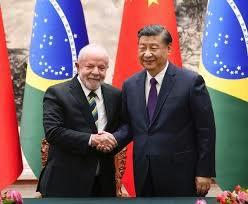The domestic U.S. prices of corn and soybeans are in large measure determined by export volume in relation to demand and availability. For the 2014 crop USDA project 38 percent of soybeans and 14 percent of corn will be exported. Policy decisions following the 2024 general election and fiscal legislation to be passed by the 119th Congress will determine future prices of corn and soybeans, given relatively constant volumes of production through 2026. The change in Administration will witness the imposition of tariffs on our USMCA neighbors and the People’s Republic of China based on pre-election promises and subsequent statements. This will inevitably result in countervailing tariffs by exporters to the U.S. placing commodity exports at a disadvantage to other suppliers.

During the first term of President Trump, a spokesperson for the American Soybean Association optimistically stated that if China reduced imports from the U.S., it would obtain supplies from other producing nations, creating equivalent export opportunities for the U.S. This self-serving presumption was based on finite world production and constant demand. The statement ignored the reality that Brazil has been able to vastly increase soybean production albeit through deforestation of the Amazon Rainforest.
In 2023, it is estimated that Brazil supplied China with close to 70 million metric tons of soybeans compared to approximately 22 million tons from the U.S. During 2022, exports from Brazil increased by 12 million metric tons to the disadvantage of the U.S.

In 2018, China imposed a reciprocal 25 percent duty on U.S. farm products, impacting the considerable reliance of China on the U.S for 40 percent of their soybean imports. This proportion has declined to 18 percent with Brazil supplying the difference. Despite the signing of the Phase 1 Trade Agreement, China has reduced both total pork production and concurrently has restricted inclusion of soybean meal in hog diets. Policymakers in China recognized their dependence on soybean imports to maintain a supply of pork, the major animal protein. China increased domestic production of soybeans to 20 million metric tons in 2024 and is making greater use of locally manufactured synthetic amino acids in hog diets.
Events in Brazil during mid-January point to the future dependence of China on Brazil to the exclusion of the U.S. President Xi Jinping attended the G-20 Leaders’ Summit in Rio de Janeiro on November 18th and 19th. Subsequently he traveled to the nation’s capital, Brasilia, and met at length with President Luiz Inacio ‘Lula’ da Silva and his top officials to negotiate and conclude 37 trade agreements. These included the purchase of soybeans and fruit, and exports of electrical vehicles and batteries and to obtain satellite technology establishing a relationship between SpaceSail of China and Telebras of Brazil.
Brazil and China will pay for each other’s purchases in their respective currencies, eliminating the U.S. dollar. Attempting to coerce nations to continue using the dollar as suggested by the incoming Administration through imposing punitive tariffs will be unsuccessful and will have severe and lasting consequences.
A trade war with China and even with our USMCA neighbors as recently suggested will result in a sharp decline in exports of soybeans and corn with a resulting depression in domestic prices. It is doubtful whether the U.S. could establish new markets at prices that would compensate for the loss of China and Mexico as major importers.
Domestic poultry and hog producers would benefit from lower prices but would forego exports to China and possibly USMCA neighbors. This reality together with predictions of CME prices below cost of production has delayed passage of the 2023 Farm Bill. A major stumbling block has been the revision of price supports for agricultural commodities. If farmers are to be compensated for losses that arise as a result of geopolitical decisions by the Administration, it will represent a detrimental increase in the national debt. Effectively, consumers and their succeeding generations will bear the cost of a misguided trade and tariff policy.